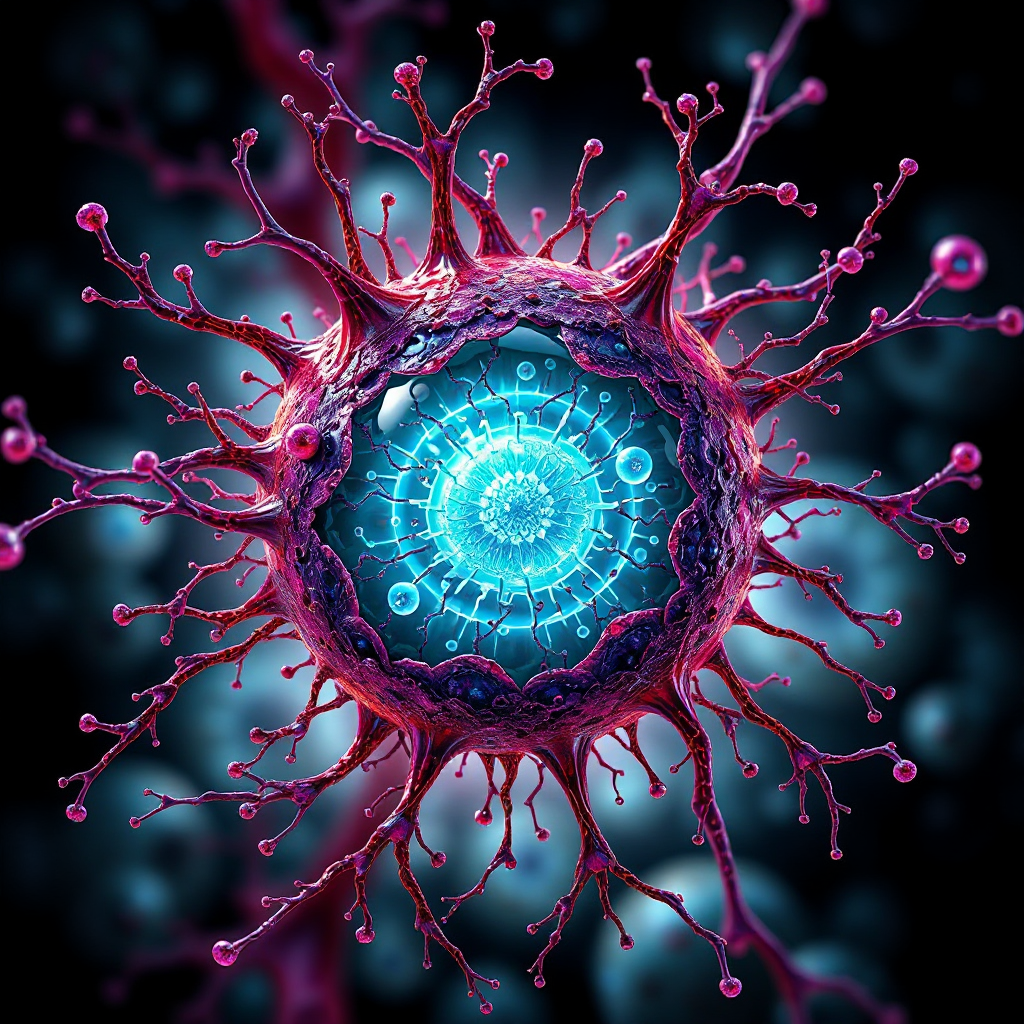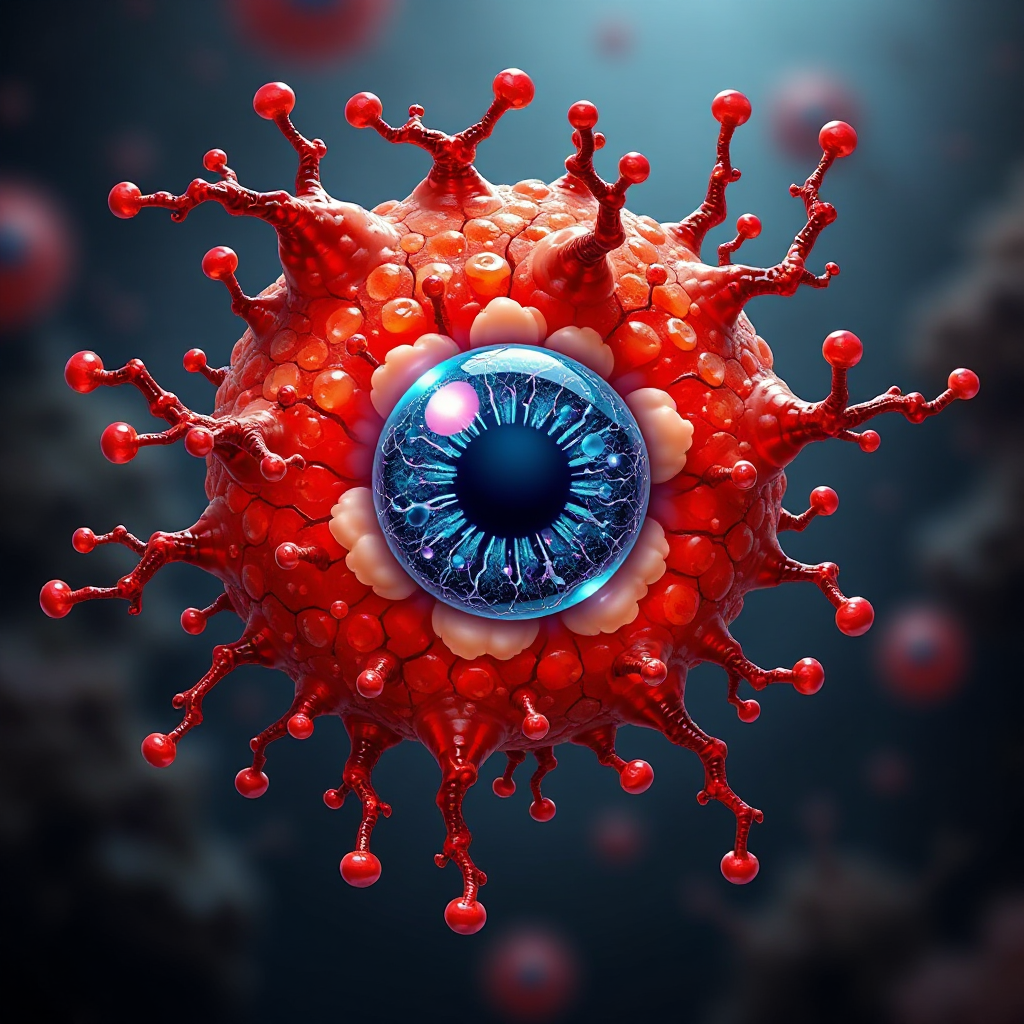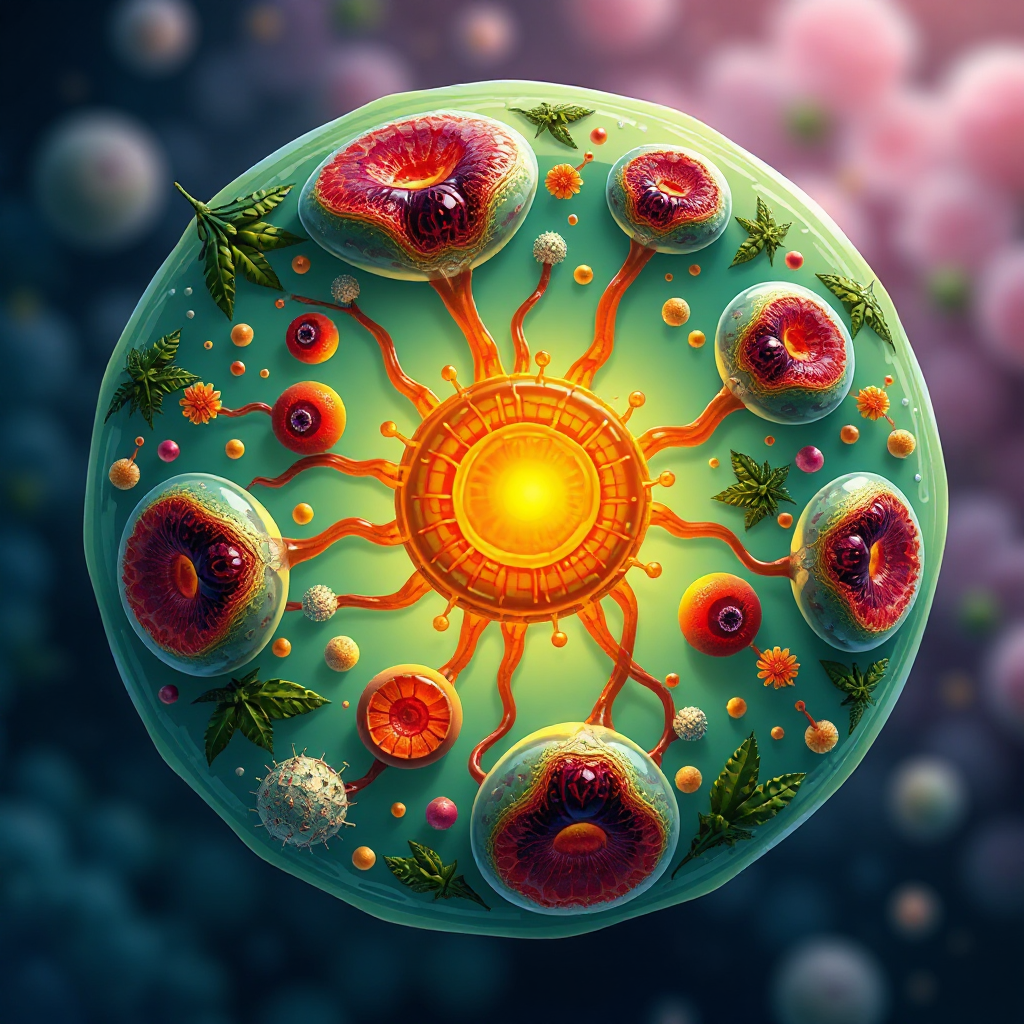What is Retinoblastoma and Its Symptoms

Retinoblastoma is a rare eye cancer that develops in the retina, the light-sensitive tissue at the back of the eye. It primarily affects children under five years old. You might notice symptoms like a white reflection in the pupil or misaligned eyes, which often signal the need for immediate medical attention. Early diagnosis plays a crucial role in saving lives and preserving vision. Studies show that diagnosing retinoblastoma early can reduce mortality by up to 65% and prevent blindness in 40% of cases. Acting quickly could make all the difference.
Key Takeaways
Retinoblastoma is a rare eye cancer in kids under five. Finding it early helps treat it and save vision.
Common signs are a white glow in the pupil and crossed eyes. Spotting these signs early can protect your child's sight and life.
Eye check-ups should start right after birth for at-risk kids. Early tests improve the chances of good treatment results.
Genetic tests can find inherited risks. If retinoblastoma runs in your family, think about genetic counseling for early checks.
New treatments like chemotherapy and other therapies help kids survive. Stay alert to get the best care for your child.
What is Retinoblastoma?
Definition and Overview
Retinoblastoma is a rare form of eye cancer that develops in the retina, the part of the eye responsible for detecting light and sending visual signals to the brain. This condition primarily affects children under the age of five. It is the most common type of eye cancer in children, with around 250 to 350 cases diagnosed annually in the United States. Retinoblastoma accounts for about 4% of all childhood cancers in those younger than 15 years old.
The disease can affect one or both eyes. In some cases, you might notice a white reflection in the pupil, often called leukocoria or "cat's eye reflex." Other signs include crossed eyes, changes in iris color, and vision problems. Early detection is crucial for effective treatment and preserving vision.
How Retinoblastoma Affects the Retina
The retina is a thin layer of tissue at the back of the eye that processes light and creates images. Retinoblastoma begins when cells in the retina grow uncontrollably due to genetic mutations. These mutations prevent the cells from functioning normally, leading to the formation of tumors.
If left untreated, the cancer can spread beyond the retina to other parts of the body, including the brain and bones. This makes early diagnosis and treatment essential for preventing complications and saving lives.
Why Retinoblastoma Primarily Affects Children
Retinoblastoma mostly occurs in children under five because their retinal cells are still developing. Mutations in the RB1 gene, a tumor suppressor gene, are responsible for most cases. This gene normally controls cell growth, but when it mutates, it allows cells to divide uncontrollably.
Children with retinoblastoma in both eyes are often diagnosed within their first year of life. Those with cancer in one eye are typically diagnosed around age two. The rapid growth of retinal cells during early childhood explains why this condition rarely affects older children or adults.
Symptoms of Retinoblastoma

Common Symptoms
Leukocoria (White Pupil Reflex)
One of the earliest and most noticeable signs of retinoblastoma is leukocoria. This condition causes a white reflection in the pupil when light shines into the eye. You might observe this during flash photography or in dim lighting. Instead of the typical red-eye effect, the pupil appears white or cloudy. This abnormal reflection occurs due to the tumor in the retina, which disrupts the normal light reflection. Leukocoria is often the first symptom that prompts parents to seek medical advice.
Strabismus (Misaligned Eyes)
Strabismus, commonly known as crossed or lazy eyes, is another frequent symptom of retinoblastoma. You may notice that your child’s eyes do not align properly or fail to move together. This misalignment happens because the tumor affects the eye’s ability to focus and coordinate movements. Strabismus can also lead to double vision or difficulty tracking objects, which may cause your child to rub their eyes frequently.
Additional Symptoms
Redness or Swelling in the Eye
Redness or swelling in the eye can indicate retinoblastoma, especially if it persists without an obvious cause like an infection. The tumor may irritate the surrounding tissues, leading to inflammation. In some cases, the eye may appear bulging or larger than usual, a condition known as buphthalmos. These symptoms often resemble other eye conditions, so it’s essential to consult an eye specialist for an accurate diagnosis.
Poor Vision or Vision Loss
Retinoblastoma can also affect your child’s ability to see clearly. You might notice that they struggle to recognize objects, bump into things, or show signs of poor depth perception. In advanced cases, the tumor can cause partial or complete vision loss in the affected eye. Early detection of these changes can significantly improve treatment outcomes.
Importance of Early Symptom Recognition
Recognizing the symptoms of retinoblastoma early can save your child’s vision and life. This cancer affects around 300 children annually in the United States, making it the most common intraocular cancer in children. Early detection leads to a high cure rate and reduces the risk of severe complications. Delayed diagnosis, however, can result in the loss of an eye or even death. By paying attention to warning signs like leukocoria, strabismus, and vision changes, you can ensure timely medical intervention.
How Does Retinoblastoma Develop?
Genetic Causes
RB1 Gene Mutation
Retinoblastoma often begins with mutations in the RB1 gene, a critical tumor suppressor. This gene helps regulate cell growth in the retina. When it mutates, cells grow uncontrollably, forming tumors. About one-third of cases are hereditary, meaning the mutation exists in all body cells. In these cases, the altered RB1 gene follows an autosomal dominant pattern. This means inheriting one mutated copy significantly increases the risk of developing the disease. However, most hereditary cases (80-90%) result from new mutations, making the affected child the first in their family with the condition. The remaining two-thirds of cases are non-hereditary, where RB1 mutations occur only in retinal cells.
Inherited vs. Sporadic Cases
Retinoblastoma can be classified as hereditary or sporadic. Hereditary cases may run in families and carry a higher risk of developing other tumors, such as those in the pineal gland or skin. These cases also have a greater chance of second cancers after radiation exposure. Sporadic cases, on the other hand, are not passed down through families. They pose a lower risk of second cancers and are less likely to affect future generations.
Non-Genetic Factors
While genetic mutations play a significant role, non-genetic factors may also contribute to retinoblastoma. Research suggests that certain environmental exposures during pregnancy could increase the risk.
Non-Genetic Factors | Description |
|---|---|
Diets low in fruits and vegetables during pregnancy | May elevate the risk of retinoblastoma. |
Exposure to chemicals in gasoline or diesel exhaust | Potentially linked to higher risk. |
Fathers exposed to radiation | Could contribute to risk factors. |
Older paternal age | Associated with increased risk. |
These factors highlight the importance of a healthy lifestyle and minimizing harmful exposures during pregnancy.
Stages of Retinoblastoma Development
Retinoblastoma progresses through distinct stages, classified into five groups based on tumor size, location, and spread.
Stage | Description |
|---|---|
Group A | Small tumors, no larger than 3 mm, confined to the retina. |
Group B | Larger tumors or those near critical structures, still confined to the retina. |
Group C | Tumor clumps spread locally into the vitreous gel or under the retina. |
Group D | Extensive seeding into the vitreous or under the retina; possible retinal detachment. |
Group E | Large tumors extending to the front of the eye, causing complications like glaucoma. |
Understanding these stages helps doctors determine the best treatment approach and predict outcomes.
Who is at Risk of Retinoblastoma?
Age and Demographics
Retinoblastoma primarily affects young children. Most cases occur in children under three years old. Congenital forms of this cancer are often detected during the first year of life. Non-heritable cases are usually diagnosed when children are one or two years old. The disease becomes rare after the age of six.
You might notice that the risk varies depending on whether the condition affects one or both eyes. About 60% of children with retinoblastoma have tumors in one eye, with diagnosis typically occurring between 18 and 36 months. In contrast, 40% of cases involve both eyes, often diagnosed within the first year of life and rarely after two years.
Family History and Genetic Predisposition
A family history of retinoblastoma significantly increases the risk of developing this condition. Approximately one-third of all cases are hereditary, meaning they result from a mutation in the RB1 gene. If you or someone in your family has had retinoblastoma, there is a higher chance of passing this mutated gene to your child.
Children with hereditary retinoblastoma often develop tumors in both eyes. This form accounts for about 40% of all cases. If you have a family history of this condition, genetic counseling can help assess the risk and guide early monitoring.
Importance of Early Screening
Early screening plays a crucial role in managing retinoblastoma, especially for children at high risk. Regular eye examinations should begin immediately after birth and continue for several years. Early detection increases the chances of successful treatment and prevents severe outcomes like blindness or death.
Parents and caregivers should stay alert to symptoms such as white spots in the eye or misaligned eyes. Early diagnosis can reduce mortality by 65% in bilateral cases and lower the risk of blindness by 40%. Acting quickly ensures better outcomes for your child.
How is Retinoblastoma Diagnosed?
Initial Eye Examination
Diagnosing retinoblastoma begins with a thorough eye examination. Specialists use several techniques to detect abnormalities in the retina. A retinal examination involves dilating your child’s eyes and using an indirect ophthalmoscope to inspect the retina. Retinal photography captures detailed images, helping document and measure tumors over time. Ultrasonography uses sound waves to create images of the eye, which are essential for assessing tumor size and location. Optical coherence tomography (OCT) provides high-resolution images of the retina, making it easier to detect small tumors. In some cases, fluorescein angiography is performed by injecting a dye to highlight blood vessels in the retina. This test helps identify changes caused by the tumor.
If necessary, an electroretinogram (ERG) may be used to measure the retina’s electrical responses, offering insights into its health and visual potential. These tests, combined with a magnetic resonance imaging (MRI) scan, provide a comprehensive evaluation of the eye and surrounding structures. Genetic testing may also be recommended to determine if the condition is hereditary.
Diagnostic Tests
Imaging Tests (MRI, CT Scan)
Imaging tests play a crucial role in confirming retinoblastoma. An MRI scan provides detailed images of the eye and surrounding tissues without using radiation. This test is often preferred for staging the disease and monitoring treatment progress. A CT scan, while less commonly used, can reveal calcium deposits in the tumor, which are a hallmark of retinoblastoma.
Ultrasound of the Eye
Ultrasound is another effective diagnostic tool. It uses sound waves to produce images of the inner eye, helping confirm the presence of a tumor. This test is particularly useful for measuring the size and extent of the tumor.
Role of Specialists in Diagnosis
Specialists such as pediatric oncologists and ocular oncologists play a vital role in diagnosing retinoblastoma. They use advanced techniques like retinal photography, ultrasonography, and OCT to detect and monitor tumors. Fluorescein angiography and ERG may also be employed to distinguish retinoblastoma from other eye conditions. Additionally, genetic testing helps determine whether the condition is hereditary, guiding treatment and screening for family members.
Treatment Options for Retinoblastoma

Standard Treatments
Chemotherapy
Chemotherapy is a common treatment for retinoblastoma. It uses drugs to shrink tumors and prevent cancer from spreading. Doctors may recommend systemic chemotherapy, which circulates throughout the body, or intra-arterial chemotherapy, which delivers drugs directly to the eye. In some cases, intravitreal chemotherapy is used to target cancer cells in the vitreous gel of the eye. These approaches are often combined with local treatments like cryotherapy or thermotherapy to improve outcomes.
Treatment Group | Treatment Options |
|---|---|
Unilateral Retinoblastoma | Enucleation for large tumors, with or without adjuvant chemotherapy. |
Conservative Approaches | Chemoreduction with systemic or intra-arterial chemotherapy, local treatments. |
Bilateral Retinoblastoma | Enucleation for large tumors, followed by risk-adapted chemotherapy if necessary. |
Radiation Therapy
Radiation therapy targets and destroys cancer cells in the retina. Plaque radiation therapy, a localized form, involves placing a small radioactive disc near the tumor. This method minimizes damage to surrounding tissues. However, radiation therapy can have side effects, including changes in bone structure around the eye, vision problems, and an increased risk of secondary cancers.
*Potential side effects include:*
Vitreous hemorrhage.
Ptosis (drooping eyelid).
Optic atrophy.
Vascular issues like artery stenosis or occlusion.
Surgery (Enucleation)
Enucleation involves removing the affected eye when the tumor is too large to save vision. This procedure is often necessary for advanced cases. While it eliminates the cancer, it may lead to changes in the shape of the bone around the eye, especially in young children. Prosthetic eyes can help restore appearance and improve quality of life.
Emerging Treatments and Research
Exciting advancements in retinoblastoma treatment are underway. Researchers are exploring the use of intravitreal melphalan injections combined with systemic chemotherapy. This approach shows promise in clinical trials like ARET2121. Additionally, scientists are investigating the potential of using aqueous fluid from the eye to evaluate cancer. These innovations offer hope for more effective and less invasive treatments.
Importance of Early Intervention
Early intervention is critical for improving outcomes in retinoblastoma cases. Detecting the disease early can lead to a high cure rate and reduce the risk of severe complications. For example, timely diagnosis of bilateral retinoblastoma can lower mortality by up to 65%. Symptoms like white spots in the eye or misaligned eyes should prompt immediate medical attention. Acting quickly can save vision and, in some cases, a child’s life.
Retinoblastoma is a treatable condition when detected early. Recognizing symptoms like leukocoria and strabismus can make a significant difference in your child’s outcome. Regular eye check-ups are essential, especially if your family has a history of retinoblastoma or RB1 gene mutations.
Early detection through routine screenings can prevent severe outcomes and improve treatment success.
Here are key steps you can take:
Watch for changes in your child’s eye appearance, movement, or vision.
Schedule regular eye exams, starting immediately after birth for at-risk children.
Consider genetic testing to determine the need for frequent screenings.
Advances in treatment continue to offer hope. From chemotherapy to emerging therapies, these innovations improve survival rates and quality of life for affected families. By staying proactive, you can ensure the best possible care for your child.
FAQ
What should you do if you notice symptoms of retinoblastoma in your child?
If you observe signs like a white pupil reflex or misaligned eyes, consult an eye specialist immediately. Early diagnosis improves treatment outcomes and can save your child’s vision.
Tip: Keep a record of any unusual symptoms to share with your doctor during the visit.
Can retinoblastoma be prevented?
You cannot prevent retinoblastoma caused by genetic mutations. However, regular screenings for at-risk children can help detect it early. Maintaining a healthy lifestyle during pregnancy may reduce non-genetic risk factors.
Is retinoblastoma always hereditary?
No, not all cases are hereditary. About two-thirds of cases are sporadic, meaning they occur without a family history. Genetic testing can help determine if the condition is hereditary in your family.
How successful are treatments for retinoblastoma?
Treatment success rates are high, especially when detected early. Over 90% of children with retinoblastoma survive, and many retain partial or full vision in at least one eye.
Note: Outcomes depend on the stage of diagnosis and the type of treatment used.
What are the long-term effects of retinoblastoma treatment?
Some children may experience vision loss, changes in eye appearance, or an increased risk of secondary cancers. Regular follow-ups with specialists help monitor and manage these effects.
Reminder: Discuss potential side effects with your doctor before starting treatment.
See Also
Understanding Hepatoblastoma: Key Symptoms To Watch For
Cerebellar Astrocytoma: Recognizing Its Main Symptoms
Cutaneous T-Cell Lymphoma: Symptoms You Should Know
